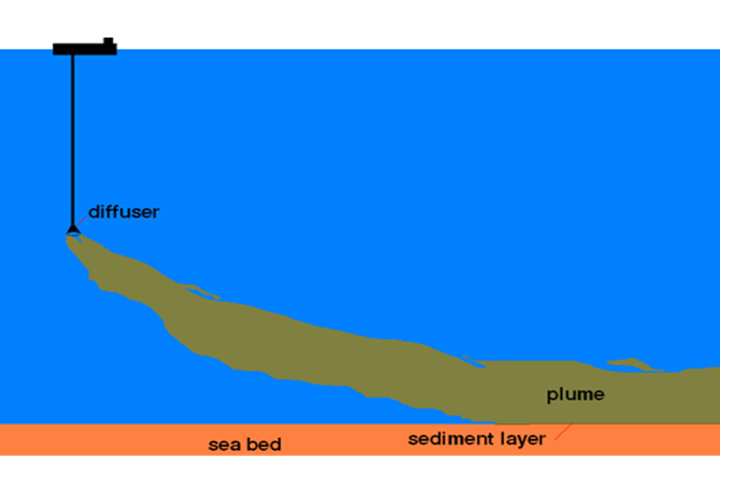Summary
Chatham Marine mining is an increasing business encouraged by the global demand of minerals. Though these deep sea mining activities leave literally a footprint on the ocean floor impacting sea life. Chatham Rock Phosphate (CRP) aims to be the premier supplier of direct application phosphate to the New Zealand and global agricultural sector, supporting sustainable farming and agricultural processes. To realize this objective phosphate will be mined at the 400 meter deep Chatham Rise, located in the SW South Pacific Ocean. At a ship the phosphate is separated from the tailings and a plume of tailings will be placed on the ocean floor at a depth of 400 m (see Figure 1). To avoid environmental issues the spreading of the plume has to be controlled. Chatham Rock Phosphate’s failure to get an environmental consent for marine mining in New Zealand is one example of the increasing global need to develop validated tools and methodologies to predict, adaptively manage and reduce the environmental effects of marine mining. Validation of (modelling) tools to predict and manage plume dispersion for deep sea mining (or dredging) operations is hampered by a general lack of field observations on the behavior of mine tailing plumes in deep to very deep water. Validation of hydrodynamics models, underlying sediment models, is feasible by executing long-term (months-year) field observations.
...
Additionally, this project investigates the use of, economically feasible and environmentally acceptable and effective, flocculants as an innovative measure to control (mitigate) the behaviour of the mine tailing plume in deep water, as part of an adaptive management strategy. Mitigation and adaptive management of (deep sea) mining operations is new; as far as we know flocculants have never been used in this type of projects.
Figure 1: Tailings placement
Objective
A final goal is to improve our knowledge and predictive capabilities of both the plume dispersion and the continuous process of settling, deposition, consolidation and associated shear strength development of tailings, and what effect the use of flocculants might have on this.
...
The first phase of laboratory analysis of mine tailing behavior is expected to be finished in April. The second phase to asses the effect of flocculants will start during phase 1 and rounded off in June (indication). Lastly the modeling and finalizing the report in planned in June and July.
Progress
The project was suspended by Chatham Rock Phosphate (CRP) in November 2017. At that time, phase 1 was partly finished and steps 1-3 of phase 2 were done. The prototype guidelines were not drafted yet. The results were reported in an internal memo and steps 2 and 3 of Phase 2 are reported in a technical report of Antea Group, to whom this part of the work was subcontracted. In the results section, only part of phase 1 and part of phase 2 is summarized.
The results are reported in the Final report.
